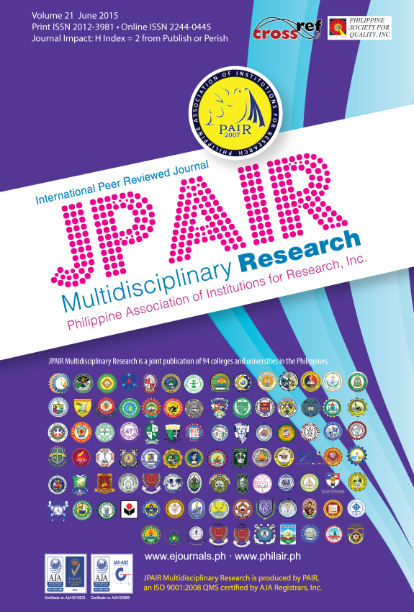Age, Residence, Parents' Educational Attainment and Exposure to Media Affect Students' Learning Styles
DOI:
https://doi.org/10.7719/jpair.v21i1.325Keywords:
Education, learning styles, emotional, intelligence, students, descriptive-correlational design, Ilocos Sur, PhilippinesAbstract
Most students are unaware of their learning styles and emotional intelligence. Thus, it is important to know one's learning styles and emotional intelligence because they can be used to increase self-awareness as to their strengths and weaknesses as learners. The study determined the learning styles and emotional intelligence of the students in the College of Technology of University of Northern Philippines, Philippines. The study utilized descriptive-correlational method of research. Results showed that student respondents have an overall high level of learning style in all of its three dimensions: visual, auditory, and kinesthetic. Also, they have an overall high level of emotional intelligence in all of its dimensions. The overall level of learning styles of the respondents is significantly related with self-motivation while visual learning style is significantly linked to self-regulation. Likewise, auditory learning style is significantly related to self-awareness, self-motivation, social skills and the overall level of emotional intelligence. Meanwhile, kinesthetic learning style is significantly related to social awareness and self-motivation. The university should conduct an assessment of learning preferences of the students to determine their strengths and weaknesses. Likewise, emotional intelligence tests should be given to students to provide essential data on the attitudes of these students.
Metrics
Downloads
References
Bonwell, C. C., & Eison, J. A. (1991). Active Learning: Creating Excitement in the Classroom. 1991 ASHE-ERIC Higher Education Reports. ERIC Clearinghouse on Higher Education, The George Washington University, One Dupont Circle, Suite 630, Washington, DC 20036-1183.
Downloads
Published
Issue
Section
License
Copyright (c) 2015 Elvin A. Balallo, Crizzle A. Bajet Paz

This work is licensed under a Creative Commons Attribution-NonCommercial 4.0 International License.
Open Access. This article published by JPAIR Multidisciplinary Research is licensed under a Creative Commons Attribution-Noncommercial 4.0 International (CC BY-NC 4.0). You are free to share (copy and redistribute the material in any medium or format) and adapt (remix, transform, and build upon the material). Under the following terms, you must give appropriate credit, provide a link to the license, and indicate if changes were made. You may do so in any reasonable manner, but not in any way that suggests the licensor endorses you or your use. You may not use the material for commercial purposes.

























